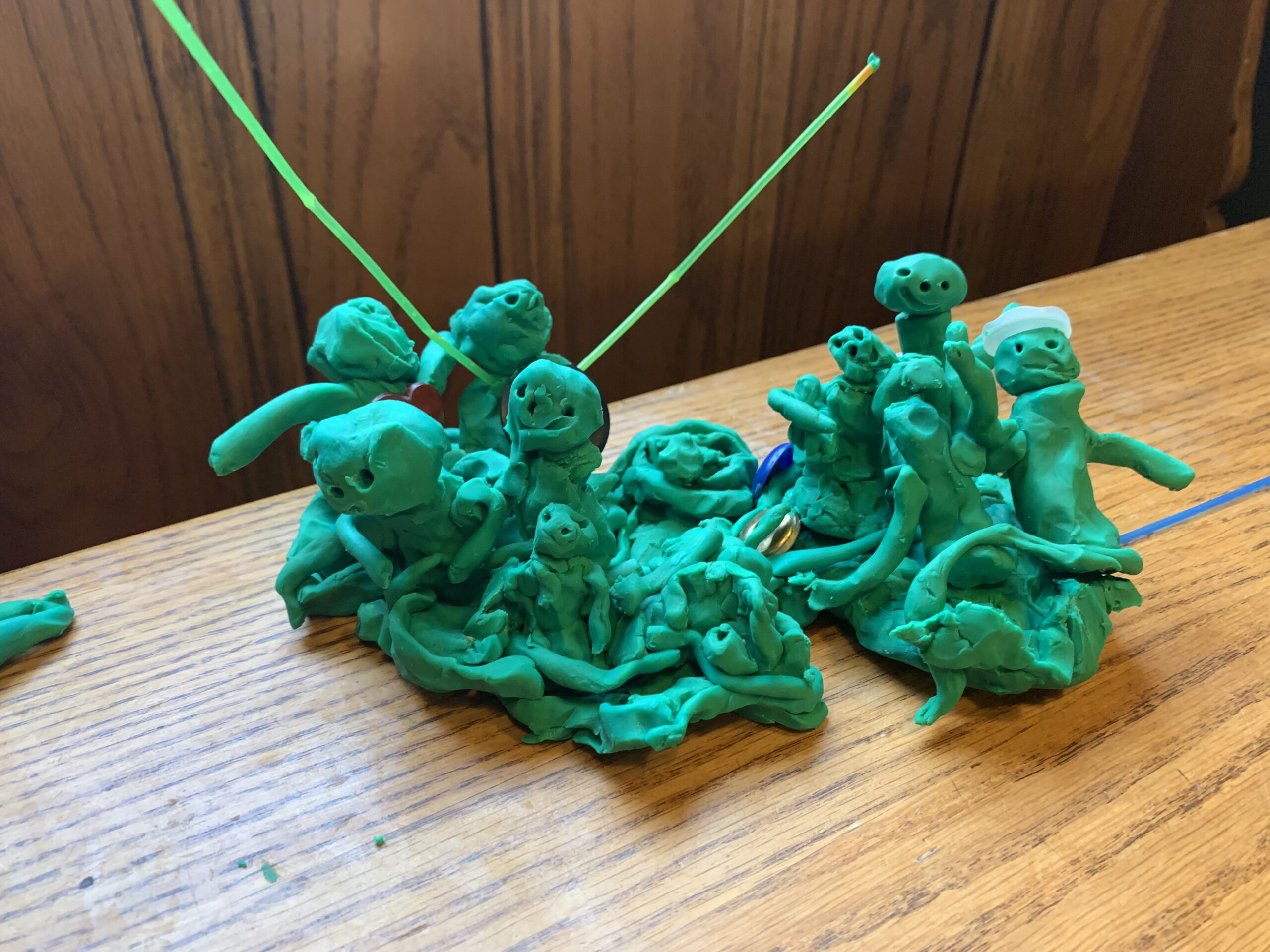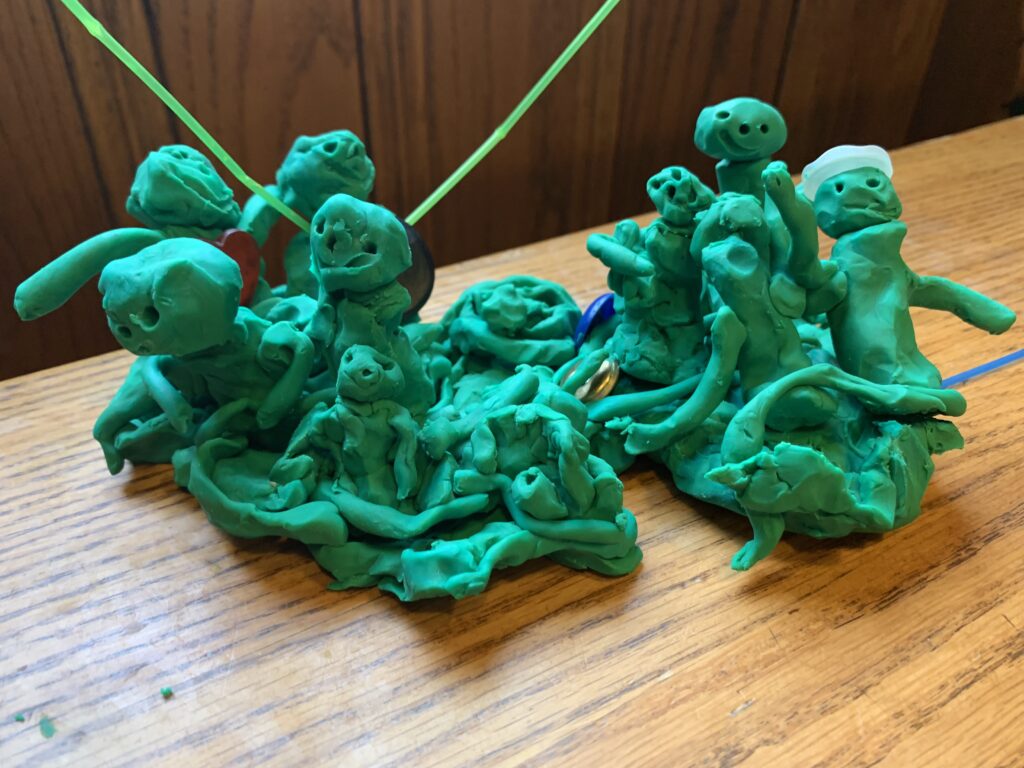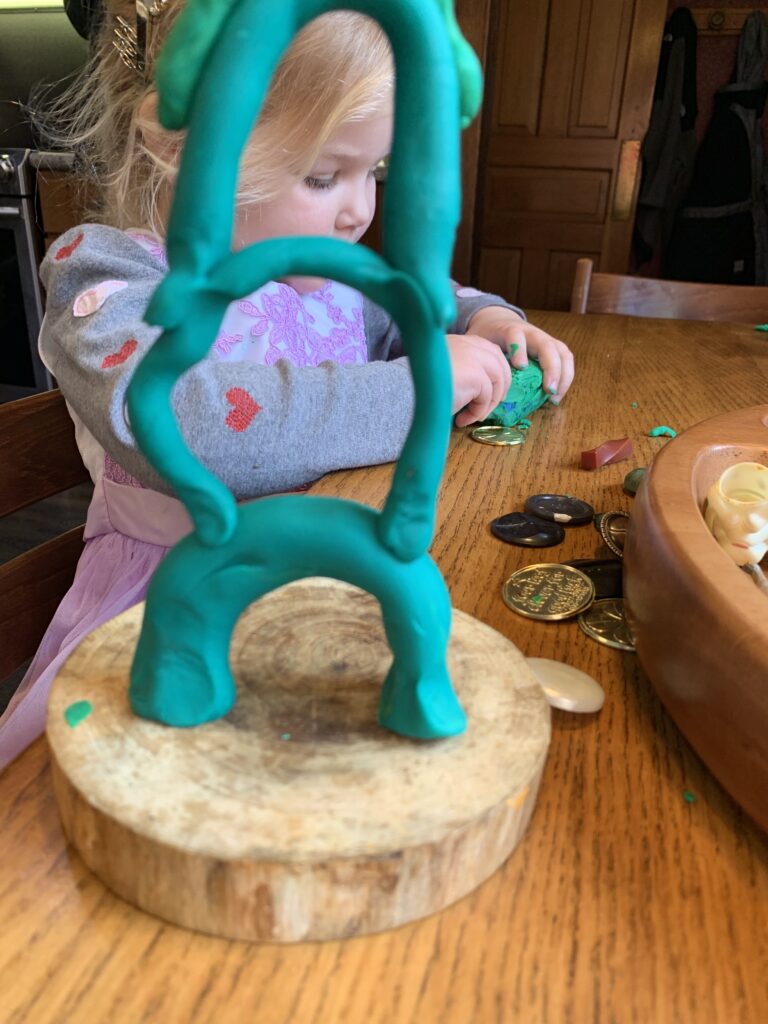
Molding Young Minds: Engineering with Clay

"Wow! How did you make that whole family?" Maura asks her friend, Maya, as she joins her at the clay table.
Maya giggles. "I started off with one person in a boat, but then I just kept adding to it. Sometimes the heads were too heavy and I had to make the bodies thicker, so then I had to make the boat bigger. Pretty soon, I had two boats full of people!"
Mesmerized, Maura studies the figures in the boats. "You added so many things," she says, her voice filled with wonder. "This is so good, Maya!"
"Thanks!" says Maya with smile and a shrug.
This interaction highlights how early childhood play, especially with materials such as modeling clay, can introduce young learners to engineering concepts in a fun and engaging way.
Engineering is often overlooked in early education, yet it plays a critical role in shaping how children think, solve problems, and create. By incorporating engineering activities into everyday play, we equip children with valuable skills that will benefit them throughout their lives.
Imagination and creativity are central to engineering, and these qualities are nurtured during clay play. As children build with clay, they develop creative solutions to problems and think outside the box—two skills that are essential to any successful engineering endeavor.
I was a playdough junkie for years. But when I discovered modeling clay, I never looked back. It's less messy and it builds stronger hand and finger muscles than playdough.
Best of all, modeling clay never dries out: EVER! Yep, you read that right. You can leave modeling clay in an uncovered tray all summer long and, when you return in the fall, it's still pliable and ready to mold. Trust me, it's a game changer!

Clay is more than just a creative medium; it’s a powerful tool for introducing young children to key engineering principles.
By experimenting with different shapes, children gain a deeper understanding of the forces that engineers must consider when designing structures. An arch distributes weight more evenly than a simple column or beam, which is why arches are commonly used in bridges and large buildings.
When children create arches with clay, they learn about the importance of balance and symmetry. These early lessons help children build an intuitive sense of more complex engineering concepts such as load-bearing and structural integrity.
Through trial and error, children quickly learn which structures are stable and which structures need a wider base or a stronger center to stay upright. When children stack clay to create a tower, they gain a basic understanding of weight distribution as they discover that heavier pieces must be placed at the bottom of a structure with lighter pieces on top.
This process of testing, revising, and refining is similar to the engineering design process that engineers use to solve real-world design challenges.
Clay play also helps children develop critical thinking skills. When a structure doesn’t work as expected, you will begin to see the engineering design process in action as your young engineering explorers ask questions such as:
- “Why didn’t that work?"
- "What can I change?"
- "How can I make it better?”
These questions are fundamental to design thinking. Engineers approach problems with an open mind and a willingness to test solutions through experimentation!

To enhance the learning experience, incorporate loose parts such as beads, buttons, sticks, or googly eyes into clay play. These materials enable children to explore different textures, weights, and sizes as they learn how different parts can be assembled to create functional objects and structures.
For example, children might use a stick as a bridge and learn about the importance of balance and support in their designs as they place beads on the stick to represent cars traveling across the bridge.
The process of choosing and arranging loose parts helps foster the development of fine motor skills and teaches children to think critically about how components interact and what will make a structure stable and functional.

Experimenting with clay also fosters a growth mindset. When a structure fails, children don’t give up: They try again! This mindset is vital for engineers, who view failure as a learning opportunity rather than a setback.
When their initial designs don't work, children intuitively engage in creative problem-solving and design thinking.
By thinking critically about what doesn't work and how to solve the problem, children develop resilience and perseverance. They learn that progress often comes from experimentation—and that the best solutions emerge through persistence and multiple iterations.
For all of these reasons, clay play is a powerful introduction to engineering. So let the clay adventures begin as you nurture the engineers and innovators of tomorrow!